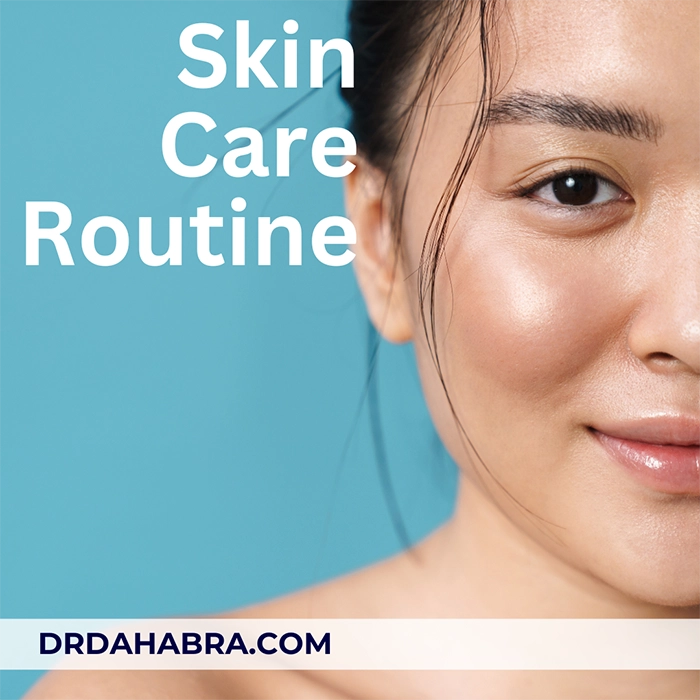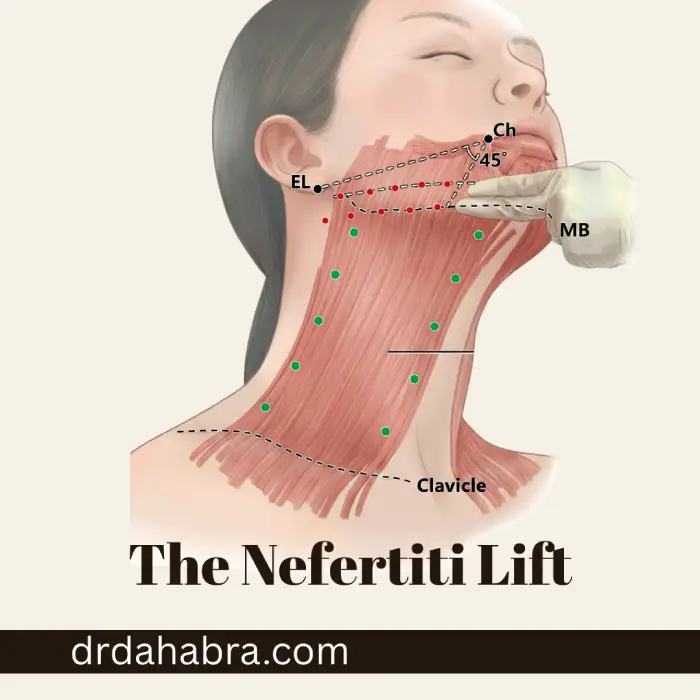Build Your Best Skin Care Routine for Radiant and Healthy Skin
Understanding Your Skin Type: The Foundation of Any Routine
Knowing your skin type is the first essential step in crafting a skincare routine that works. This article is about how to build your best skin care routine.
Skin types generally fall into four categories: normal, dry, oily, and combination. Identifying your type is crucial because it determines the kinds of products your skin will respond to best.
People with dry skin, for instance, need more hydration-focused products, while oily skin types benefit from oil-balancing cleansers and lightweight moisturizers.
Genetics, environment, and lifestyle factors can also influence skin types. For example, a person’s natural oil production can vary due to seasonal changes or dietary habits. Understanding these factors helps you adapt your routine as needed.
To accurately identify your skin type, you can observe your skin throughout the day, use a blotting sheet test, or consult a dermatologist for a professional analysis.
Once you understand your skin type, it becomes much easier to select the right products. With the proper knowledge, you can ensure that each skincare routine supports your unique needs, leading to healthier, more resilient skin.
Table of Contents
1. The Essential Steps: Building Blocks of an Effective Skin Care Routine
2. Cleansing 101: Choosing the Right Cleanser for Your Skin Type
3. Toning: The Importance of Balancing Your Skin’s pH Levels
4. Exfoliation: How Often and What Types Work Best
5. Moisturizing: Why Hydration is Key for Every Skin Type
6. Sun Protection: The Importance of Daily SPF
7. Targeted Treatments: Choosing the Right Serums and Boosters
8. Night Care: Why Evening Routines Are Essential for Skin Renewal
9. Anti-Aging Solutions: Key Ingredients for Youthful Skin
10. Acne-Prone Skin: Tailoring a Routine for Clearer Skin
11. Sensitive Skin: Tips for Gentle, Soothing Care
12. Dry Skin: Adding Intense Hydration to Your Routine
13. Combination and Oily Skin: Balancing Oil and Moisture
14. Adapting Your Routine: How to Modify Your Routine for Seasonal Changes
15. Frequently Asked Questions (FAQs)
16. Conclusion
17. Transform Your Look By Following the Best Skin Care Routine
18. References
1. The Essential Steps: Building Blocks of an Effective Skin Care Routine
A well-rounded skincare routine consists of several key steps, each with its specific purpose. Cleansing removes impurities, toning balances the skin, moisturizing locks in hydration, and sun protection shields against harmful UV rays.
Each of these steps builds upon the previous one to create a routine that addresses the fundamental needs of the skin.
In addition to the basics, targeted treatments like serums or spot treatments can be added to address specific concerns. People with acne might incorporate a salicylic acid serum, while someone concerned with aging might opt for a retinol product.
Understanding the purpose of each step ensures that you’re not just applying products randomly but building a layered defense that strengthens and protects your skin.
Consistency is vital to seeing results. Sticking to these core steps day and night helps maintain the skin’s health and resilience, creating a radiant, balanced complexion.
2. Cleansing 101: Choosing the Right Cleanser for Your Skin Type
Cleansing is the foundation of any skincare routine, as it removes dirt, oils, and impurities that accumulate on the skin throughout the day. Choosing a cleanser that suits your skin type can make all the difference.
For example, gel-based or foaming cleansers work well for oily skin, as they help reduce excess oil. In contrast, cream cleansers are more suitable for dry or sensitive skin types as they offer gentle, hydrating formulas.
Proper cleansing should be done twice daily, once in the morning and once at night. However, over-cleansing can strip the skin’s natural oils, which are essential for maintaining moisture and protection.
Double cleansing—using an oil-based cleanser followed by a water-based one—is an excellent method for ensuring a deep cleanse without being too harsh, especially for those who wear makeup or sunscreen.
After cleansing, it’s vital to pat the skin dry gently and avoid rubbing, which can irritate. This initial step prepares the skin for the following products and ensures that other steps are more effective, as they can penetrate clean skin better.
3. Toning: The Importance of Balancing Your Skin’s pH Levels
Toning is a step in skincare that helps restore the skin’s pH balance after cleansing, preparing it for subsequent products. Cleansers can sometimes strip the skin of its natural oils, leaving it slightly more alkaline than it should be. Toners work to rebalance the pH, allowing the skin to better absorb serums, moisturizers, and other treatments that follow. Many toners also provide a lightweight layer of hydration, making the skin feel refreshed and ready for the next steps.
Modern toners go beyond just balancing pH. Many are formulated with ingredients that target specific skin concerns, like hyaluronic acid for hydration, witch hazel for oil control, and antioxidants for protection against environmental damage. Hydrating toners can be especially beneficial for dry and sensitive skin types, while those with oily or acne-prone skin may benefit from toners containing salicylic acid to help keep pores clear.
Using toner is simple: after cleansing, apply toner with a cotton pad or your fingertips, gently patting it onto your face and neck. It’s a step that only takes a moment but sets the stage for a more effective routine. By incorporating a well-chosen toner, you’re not only balancing your skin but also enhancing the effectiveness of every product that follows.
4. Exfoliation: How Often and What Types Work Best
Exfoliation removes dead skin cells from the skin’s surface, promoting a smoother texture and a brighter complexion. Exfoliating 1-3 times a week for most skin types can help improve skin texture and radiance.
However, the frequency largely depends on individual skin sensitivity, as over-exfoliating can lead to irritation, dryness, and breakouts. There are two primary types of exfoliants: physical and Chemical.
Physical exfoliants, like scrubs, use particles to manually slough off dead cells, while chemical exfoliants, like AHAs (alpha hydroxy acids) and BHAs (beta hydroxy acids), dissolve these cells without abrasive action.
Each type of exfoliant has its benefits. Chemical exfoliants can penetrate deeper into pores, making them ideal for addressing concerns like acne and pigmentation, while physical exfoliants offer an instant smoothing effect.
Opting for gentler chemical exfoliants like lactic acid is often better than physical scrubs for sensitive skin types.
Finding the right exfoliation balance is critical. While it can be tempting to exfoliate frequently to achieve that fresh-faced glow, moderation is essential to avoid damaging the skin’s protective barrier.
A consistent, moderate exfoliation routine can significantly improve skin tone and texture, resulting in a naturally radiant appearance.
5. Moisturizing: Why Hydration is Key for Every Skin Type
Moisturizing is a non-negotiable step in any skin care routine, regardless of skin type. It helps maintain the skin’s hydration levels, keeping it plump, smooth, and less prone to fine lines.
Even oily skin types need a good moisturizer, as skipping this step can lead to overproduction of oil, worsening oily skin conditions. Hydrating the skin keeps it balanced and prepares it for environmental stressors throughout the day.
Moisturizers come in different formulations—gels, creams, and lotions—catering to various skin types. Those with oily skin may prefer lightweight, gel-based moisturizers that hydrate without feeling heavy, while dry skin types benefit from richer creams that provide deep hydration and nourishment.
A balanced moisturizer that addresses dry and oily areas is ideal for combination skin.
A well-formulated moisturizer keeps skin moist and helps strengthen the skin barrier, protecting it from irritants and locking in the benefits of previous products. Applying moisturizer right after cleansing and any treatments can seal in hydration, making it a pivotal step in achieving soft, supple skin.
6. Sun Protection: The Importance of Daily SPF
Daily sunscreen is one of the most crucial steps in a skin care routine. Sun exposure contributes significantly to premature aging, causing fine lines, dark spots, and a breakdown in skin elasticity.
It also increases the risk of skin cancer. By incorporating an SPF of at least 30 into your morning routine, you protect your skin from harmful UV rays and maintain a healthier complexion over time.
There are two types of sunscreens: physical (mineral) and Chemical. Physical sunscreens sit on top of the skin and reflect UV rays, while chemical sunscreens absorb UV rays and convert them into heat.
Both are effective, but physical sunscreens are often recommended for sensitive skin, as they are less likely to irritate.
Sunscreen should be the final step in a morning routine and reapplied every two hours if you spend extended time on your doorstiyou’redoors. Even on cloudy days, UV rays can penetrate through clouds, making daily sun protection essential.
Consistent sunscreen use prevents visible signs of aging and supports overall skin health.
7. Targeted Treatments: Choosing the Right Serums and Boosters
Serums and boosters are concentrated treatments to address skin concerns like acne, dark spots, and wrinkles. With various options on the market, choosing the right ones can be overwhelming.
However, a few key ingredients are particularly effective. Vitamin C is a popular choice for brightening for brightening and helps reduce hyperpigmentation and boost radiance.
For anti-aging, retinol and peptides promote cell turnover and stimulate collagen products, reducing fine lines.
When incorporating serums, it’s best to introduce one at a time, as layering too many active ingredients can lead to irritation. It’s also essential to apply serums after cleansing and toning but before moisturizing, as their lightweight formulas are designed to penetrate the skin deeply.
Using targeted treatments effectively means understanding your specific skin goals and selecting products that align with them. While adding serums and boosters can elevate a routine, consistency in use is crucial for seeing noticeable improvements in the skin’s texture, tone, and clarity.
8. Night Care: Why Evening Routines Are Essential for Skin Renewal
Nighttime is when your skin goes into repair mode, making it the perfect time to apply products that promote cell renewal and recovery. A nighttime routine typically includes a thorough cleanse, targeted treatments like retinoids or serums, and a nourishing moisturizer to lock in hydration.
Night-specific products often have more affluent, more potent formulations designed to work while the skin rests, allowing maximum absorption and effectiveness.
One popular ingredient for night routines is retinol, a derivative of Vitamin A that encourages cell turnover and reduces signs of aging; retinol can be potent, so it is important to introduce it into your routine and use it only at night.
Following retinol or other treatments with a deeply hydrating moisturizer helps the skin recover and stay balanced.
Creating a dedicated night care routine allows you to target specific skin concerns while giving your skin time to repair itself, resulting in fresher, healthier-looking skin by morning.
9. Anti-Aging Solutions: Key Ingredients for Youthful Skin
Anti-aging skin care focuses on addressing and preventing signs of aging, like fine lines, wrinkles, and loss of elasticity.
Key ingredients in anti-aging products include retinol, hyaluronic acid, peptides, and antioxidants, all of which help firm, plump, and rejuvenate the skin. Retinol, for instance, is widely celebrated for its ability to promote collagen production and cell turnover, reducing wrinkles over time.
Hyaluronic acid is another essential anti-aging ingredient, as it helps retain moisture, giving the skin a fuller, more hydrated look. Peptides are short chains of amino acids that support collagen and kinesin, two proteistructuskin’scorporatinskin’s fisking’s and structuskstructuskin’scorporatinggredients into a routine early on can help prevent premature aging. At the same time, consistent use over time can address existing signs of aging, leading to smoother, more resilient skin.
10. Acne-Prone Skin: Tailoring a Routine for Clearer Skin
Acne-prone skin requires a routine focused on gentle cleansing, oil control, and treatments that target breakouts without irritating the skin. Ingredients like salicylic acid and benzoyl peroxide effectively reduce acne as they work to unclog pores and reduce inflammation.
Incorporating these treatments in moderation can significantly improve acne symptoms while keeping the skin balanced.
Non-comedogenic (non-pore-clogging) products are also essential for acne-prone skin. Using lightweight, oil-free moisturizers and sunscreens can provide necessary hydration without exacerbating breakouts.
A gentle cleanser, preferably one that targets excess oil, helps clear the skin without stripping it, maintaining a healthy oil balance.
Building a consistent routine with essential acne-fighting products can keep breakouts at bay, minimize inflammation, and help acne-prone skin achieve a more even, healthier complexion.
11. Sensitive Skin: Tips for Gentle, Soothing Care
Sensitive skin can quickly react to harsh ingredients, so a gentle, minimalistic approach works best. Fragrance-free, hypoallergenic products are recommended to minimize irritation.
Common soothing ingredients like aloe vera, chamomile, and oatmeal help calm redness and inflammation, making them ideal for sensitive skin types.
Layering products slowly is another critical strategy for sensitive skin. Introducing one product at a time and allowing the skin to adjust can help avoid unexpected reactions. A simple routine that includes a gentle cleanser, hydrating moisturizer, and sunscreen is often enough to keep sensitive skin healthy and protected.
Sensitive skin benefits from consistency and caution, focusing on soothing, skin-irritating products that maintain the skin’s naskin’sbarrier and reactions.
12. Dry Skin: Adding Intense Hydration to Your Routine
Dry skin lacks adequate hydration, often resulting in tightness, flakiness, and a dull complexion.
To combat this, a routine for dry skin should include deeply hydrating ingredients like hyaluronic acid, ceramides, and squalane. These ingredients attract moisture and reinforce the skin barrier, helping it retain hydration throughout the day.
A rich moisturizer is essential for dry skin, especially during nighttime when the skin loses moisture. For additional hydration, incorporating a hydrating serum or using a facial oil can provide an extra boost, leaving the skin soft and supple.
Dry skin types benefit from layering hydration-focused products, creating a barrier that locks in moisture and gives the skin a healthy, dewy appearance.
13. Combination and Oily Skin: Balancing Oil and Moisture
Combination and oily skin require a routine that balances oil production while keeping the skin hydrated.
Gel-based or water-based moisturizers work well for these skin types, providing lightweight hydration without feeling greasy. Niacinamide can help regulate sebum production for oily skin, reducing shine and preventing clogged pores.
For combination skin, balancing is critical. Targeting oilier areas with oil-absorbing products while providing extra hydration to drier areas can help create a balanced, even complexion.
An exfoliating product once or twice a week can also help manage excess oil and prevent breakouts.
A consistent routine with lightweight, balancing products can keep combination and oily skin clear, hydrated, and shine-free.
14. Adapting Your Routine: How to Modify Your Routine for Seasonal Changes
As seasons change, so do the needs of your skin. Cold weather often brings drier conditions, calling for more affluent, hydrating products. Conversely, warm and humid weather may require lighter products to prevent excess oiliness.
Adjusting your routine to include products suited to seasonal conditions ensures your skin remains balanced and comfortable throughout the year.
For example, adding a heavier moisturizer or facial oil in winter can combat dryness, while switching to a gel-based cleanser in summer can help keep oily skin in check. SPF is crucial year-round, but higher SPF products may be more beneficial during sunny seasons.
Adapting your routine seasonally ensures that your skincare remains effective, protecting it from the elements and keeping it radiant and resilient year-round.
15. Frequently Asked Questions (FAQs) About How to Build Your Best Skin Care Routine
Q1. What is the best skincare routine order?
Concise Answer: Start with cleansing, followed by toning, treating, moisturizing, and applying SPF.
Detailed Answer: The best skin care routine order is to cleanse first, which removes impurities, then tone to balance pH levels, followed by treatment steps like serums. Next, moisturize to lock in hydration, and finally, apply SPF in the morning to protect against sun damage.
Q2. How often should you exfoliate?
Concise Answer: Exfoliate 1-3 times per week, depending on skin sensitivity.
Detailed Answer: Exfoliation frequency depends on your skin and exfoliant types. Most people can exfoliate 1-3 times weekly; however, sensitive skin may require less frequent exfoliation, while oily or resilient skin can handle more regular exfoliation for smooth, precise results.
Q3. What’s the difference between a serum and a moisturizer?
Concise Answer: Serums are lightweight treatments targeting specific skin concerns, while moisturizers hydrate and protect the skin’s barrier.
Detailed Answer: Serums are designed to deliver concentrated active ingredients like antioxidants, vitamins, or acids directly into the skin to target specific concerns, such as brightening or anti-aging.
On the other hand, moisturizers focus on hydrating the skin and sealing it in moisture, which helps protect the skin barrier and locks in the benefits of any treatments or serums applied beforehand.
Q4. How do I know if I’m over-exfoliating?
Concise Answer: Signs of over-exfoliation include redness, irritation, peeling, and increased sensitivity.
Detailed Answer: Over-exfoliation occurs when the skin’s natural barrier is disrupted, resulting in inflammation, redness, and peeling. Other symptoms can include stinging or burning sensations when applying other products, as well as increased sensitivity to the sun.
To avoid over-exfoliation, limit exfoliating treatments to 1-3 times a week and use gentler exfoliants if your skin is susceptible.
Q5. Can I use the same skin care products in the morning and at night?
Concise Answer: Some products can be used both morning and night, but others are best suited for one time of day.
Detailed Answer: While products like cleansers and moisturizers can typically be used twice a day, others, such as retinoids or certain acids, are more suited for nighttime use due to their potency and potential sensitivity to sunlight.
Morning routines should focus on protection (like SPF), while nighttime routines are ideal for repair and deeper treatments.
Q6. Is it necessary to use a toner?
Concise Answer: A toner is not essential but can provide additional benefits like pH balance and hydration.
Detailed Answer: Toners can help remove any residual impurities left after cleansing while also helping to balance the skin’s pH levels and prepare it to absorb serums and moisturizers better.
Some toners also contain hydrating or soothing ingredients that can be beneficial, especially for dry or sensitive skin. However, a toner is optional if you follow a basic routine.
Q7. How much product should I use for each step?
Concise Answer: Use a pea-sized amount for serums, a dime-sized amount for moisturizer, and a nickel-sized amount for sunscreen.
Detailed Answer: It’s easy to overuse products, but a little goes a long way. For cleansers, a quarter-sized amount is generally enough to cleanse the face and neck.
For serums, a pea-sized amount will ensure enough coverage without overloading the skin. Moisturizers usually require a dime-sized portion, while SPF should be applied generously—about a nickel-sized amount for full face coverage.
Q8. Do I need to change my skincare routine with the seasons?
Concise Answer: Adapting your routine seasonally can help address changes in skin needs due to weather.
Detailed Answer: Seasonal changes can impact your skin, with colder months often causing dryness and warmer months increasing oil production.
In winter, richer moisturizers and hydrating serums can help combat dry skin, while in summer, lightweight products and mattifying formulas are better suited for humid climates. Adjusting products seasonally helps keep skin balanced and protected.
Q9. Is it okay to skip my skin care routine sometimes?
Concise Answer: Occasionally skipping is fine, but consistent care is crucial for lasting results.
Detailed Answer: While missing a night of skin care here or there isn’t likely to cause harm, regular adherence to your routine is essential for maintaining skin health and achieving the best results.
Consistency is essential for treatments targeting specific issues, like acne or anti-aging, as results are cumulative and build over time.
Q10. What’s the difference between physical and chemical exfoliants?
Concise Answer: Physical exfoliants manually scrub the skin, while chemical exfoliants dissolve dead skin cells.
Detailed Answer: Physical exfoliants use small particles or brushes to manually remove dead skin cells from the surface.
Chemical exfoliants, like AHAs and BHAs, dissolve these cells without abrasive action, allowing for a gentler but often more effective exfoliation. Chemical exfoliants can penetrate deeper and are typically preferred for targeting issues like acne or uneven skin texture.
Q11. Should I apply products to my neck and chest, too?
Concise Answer: Yes, including your neck and chest ensures a more even skin care effect.
Detailed Answer: The neck and chest area, often exposed to the same environmental factors as the face, can show signs of aging and sun damage if neglected.
Applying products like cleansers, moisturizers, and sunscreen to these areas can help keep the skin as healthy and youthful as the face, providing a more cohesive, youthful look.
Q12. Can I combine multiple serums in my routine?
Concise Answer: Yes, but it’s best to layer serums carefully and avoid conflicting ingredients.
Detailed Answer: You can use multiple serums to target different concerns, but it’s essential to layer them correctly. Start with lighter, water-based serums and follow with oil-based ones.
However, avoid combining certain active ingredients, like retinol and strong acids, as this may irritate. Introduce one serum at a time to observe how your skin reacts before adding others.
Q13. How long should I wait between applying different products?
Concise Answer: Wait about 30 seconds to one minute between layers to allow each product to absorb.
Detailed Answer: Waiting between product applications helps prevent products from pilling or diluting each other. A short wait time—around a minute—allows each product to sink into the skin properly.
For thicker products, like moisturizers, giving extra time before applying makeup can prevent smudging and ensure your routine is effective.
Q14. What’s the ideal time to apply anti-aging products?
Concise Answer: Anti-aging products, especially retinoids, are best applied at night.
Detailed Answer: Nighttime is ideal for anti-aging treatments like retinoids and peptides because the skin goes into repair mode while we sleep, allowing these ingredients to work more effectively.
Additionally, retinoids can increase skin sensitivity to sunlight, so avoiding using them in the morning is best. Applying anti-aging products at night helps maximize their benefits while protecting the skin during the day.
Q15. How long does it take to see results from a new skin care routine?
Concise Answer: It generally takes 4-6 weeks to see visible results from a new skincare routine.
Detailed Answer: Skin care products need time to show results, as the skin’s natural cell turnover cycle takes about 28 days.
For lasting changes like improved texture or tone, it’s common to see initial effects within a month, while issues like fine lines or hyperpigmentation may take several months. Patience and consistency are essential, as the benefits build gradually with regular use.
16. Conclusion: How to Build Your Best Skin Care Routine
Building a skin care routine may seem complex, but with a clear understanding of each step and product, you can create a routine that caters to your skin’s unique needs.
Starting with an analysis of your skin type allows you to make informed decisions and choose the products that will be most effective for you. With consistency, each step in your skin care routine contributes to a balanced and healthy complexion, helping you achieve that radiant glow.
Over time, as your skin changes due to environmental or lifestyle factors, adapting your routine ensures it continues to meet your needs.
By following these guidelines and selecting high-quality products, you invest in your skin’s long-term health and beauty.
Remember, a well-rounded skincare routine is a form of self-care that goes beyond appearance, supporting your confidence and overall well-being.
We have covered everything about how to build your best skin care routine.
17. Transform Your Look By Following the Best Skin Care Routine
Experience the revolutionary power of the best skincare routine in Florida. Our state-of-the-art treatment revitalizes and rejuvenates, offering you a path to radiant, youthful skin. Why wait to unlock your best self?
Call us now at (954) 595-2607 or book online. Your journey to flawless skin begins with just a click or a call.
Embrace the beauty, embrace innovation – Embrace You.
18. References
- Dr. Chadi Dahabra
- Plantation Med Spa
- West Palm Beach Med Spa
- Beverly Hills Wellness Center & Med Spa
- Understanding and Treating Various Skin Types: The Baumann Skin Type Indicator
- Safety, effectiveness and comparability of professional skin cleansers
- The clinical benefit of moisturizers
- Sunscreen Application and Its Importance for the Sun Protection Factor
- The Five Paradoxes of Vitamin D and the Importance of Sunscreen Protection
- Natural anti-aging skincare: role and potential
- Seasonal changes in the physiological features of healthy and sensitive skin
- Skin Aging and Herbal Anti-Aging Serums: A Comprehensive Review
- Skin work: Understanding the embodied experience of acne
- How to Achieve Acne Clear Skin
- Diet and skin health: The good and the bad
- Diet and Skin Aging—From the Perspective of Food Nutrition




